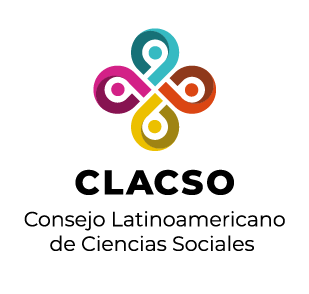Red de Bibliotecas Virtuales de Ciencias Sociales en
América Latina y el Caribe

Por favor, use este identificador para citar o enlazar este ítem:
https://biblioteca-repositorio.clacso.edu.ar/handle/CLACSO/255857| Título : | El cuerpo como territorio de vivencias : desarrollo de un proceso de danza movimiento terapia con un grupo de personas adultas mayores que asisten al Centro Diurno Hatillo-San Sebastián |
| Autor : | : Diego, León-Páez Brealey |
| Palabras clave : | VEJEZ;DANZA;CALIDAD DE VIDA;SAN JOSÉ (COSTA RICA);PSICOTERAPIA;PSYCHOTHERAPY;OLD AGE;DANCE;QUALITY OF LIFE |
| Editorial : | Universidad Nacional, Costa Rica |
| Descripción : | El presente proyecto tuvo como objetivo general promover nuevos significados
de la vivencia intrasubjetiva e intersubjetiva de la corporalidad en un grupo de personas
adultas mayores que asisten al Centro Diurno Hatillo - San Sebastián (CDHSS) a través
de un proceso de Danza Movimiento Terapia (DMT). El proceso se respaldó
teóricamente en el enfoque psicoanalítico grupal, retomando aportes de René Kaës
(1994, 2005 y 2008) acerca de la realidad psíquica grupal y considerando
contribuciones de Sharon Chaiklin (2008), danza movimiento terapeuta que ha
trabajado desde postulados psicoanalíticos. Estas propuestas sumadas a
señalamientos de Freud (1890 y 1905), fueron integradas para favorecer el bienestar
intrasubjetivo a través de la relación dinámica cuerpo-mente y para fomentar bienestar
intersubjetivo por medio de encuentros grupales que diversificaron la vinculación con el
entorno social dentro del CDHSS. Durante las sesiones del proyecto y con el fin de
favorecer la dinámica desde la facilitación, se tuvo como asistente a Estefanía Valverde
Bonilla, egresada del bachillerato de Psicología de la Universidad Nacional.
Los resultados del proyecto evidenciaron que se pudo incidir en las principales
necesidades psicosociales del grupo de PAM participantes: vivencias displacenteras de
sus cuerpos y vivencias de soledad y tristeza. Además, representó una oportunidad de
explorar y reconocer la subjetividad de la corporalidad, una manera integral que había
sido escasa o nula para expresar las emociones y sentimientos, un camino de buscar y
encontrar formas alternativas de vincularse con el resto del grupo y una posibilidad de
disminuir la sensaciones de soledad y tristeza. Asimismo, fue una herramienta para
fortalecer estados placenteros, vínculos afectivos, compañías atentas, la revaloración
del amor hacia el propio cuerpo y la unión grupal como un recurso accesible y efectivo. The present project had the general objective of promoting new meanings of the intrasubjective and intersubjective experience of corporeality in a group of people older adults who attend the Hatillo Day Center - San Sebastián (CDHSS) through of a Dance Movement Therapy (DMT) process. The process was supported theoretically in the group psychoanalytic approach, taking up contributions from René Kaës (1994, 2005 and 2008) about group psychic reality and considering contributions from Sharon Chaiklin (2008), dance movement therapist who has worked from psychoanalytic postulates. These proposals added to Freud's remarks (1890 and 1905), were integrated to favor the well-being intrasubjective through the dynamic body-mind relationship and to promote well-being intersubjective through group encounters that diversified the relationship with the social environment within the CDHSS. During the project sessions and in order to favor the dynamics from the facilitation, Estefanía Valverde was the assistant Bonilla, graduated from the Bachelor of Psychology at the National University. The results of the project showed that it was possible to influence the main psychosocial needs of the participating PAM group: unpleasant experiences of their bodies and experiences of loneliness and sadness. In addition, it represented an opportunity to explore and recognize the subjectivity of corporeality, an integral way that had been little or no to express emotions and feelings, a path of seeking and find alternative ways of connecting with the rest of the group and a possibility of decrease feelings of loneliness and sadness. It was also a tool for strengthen pleasant states, affective bonds, attentive companies, reassessment of love towards one's own body and group union as an accessible and effective resource. Universidad Nacional, Costa Rica Escuela de Psicología |
| URI : | https://biblioteca-repositorio.clacso.edu.ar/handle/CLACSO/255857 |
| Otros identificadores : | http://hdl.handle.net/11056/21139 |
| Aparece en las colecciones: | Facultad de Ciencias Sociales - UNA - Cosecha |
Ficheros en este ítem:
No hay ficheros asociados a este ítem.
Los ítems de DSpace están protegidos por copyright, con todos los derechos reservados, a menos que se indique lo contrario.